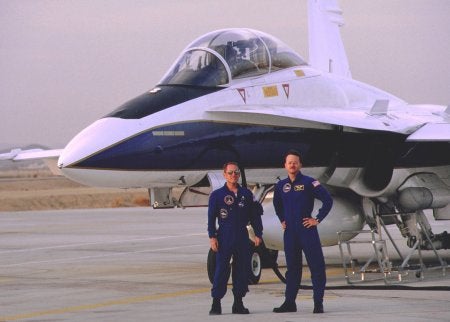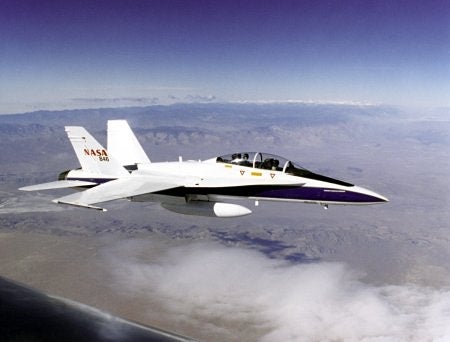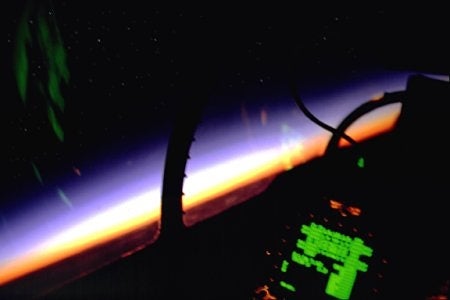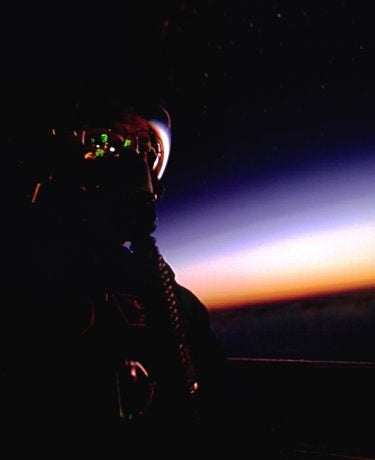Trying to find such small, faint objects in the glare of the Sun requires looking through a bright twilight sky. Ground-based attempts over the past few decades had turned up nothing, so we decided on a different tack: searching for Vulcanoids from a NASA F-18 aircraft.
What’s it like doing astronomy from an F/A-18B Hornet? Like any ground-based observing session, our Southwest Research Institute/NASA airborne astronomy missions required training and planning — and resulted in some truly awesome views.
Then the life-support personnel issue and check your personal flight gear, making sure your oxygen mask is in good working order and that your g-suit and harness fit securely. Next, it’s off to water survival training, high-altitude physiological training, and egress and ejection training. In the dynamic environment of supersonic flight at high altitudes, things can and do sometimes go wrong — so you need to be prepared. And, of course, you spend some time on the ground at night recording practice data with your imaging system so you know all of the instrumentation’s operational details.
For airborne observations such as ours, you need to factor in flight planning as well. Among the factors that need to be considered are the takeoff time to reach the planned observing location and altitude, the winds at that altitude, the fuel load, and coordinating with air traffic control for the planned flight path. The mission pilot is briefed on the science plan and you work together closely to merge the science and flight plans. After the preflight briefing is complete, it’s off to the flight crew locker room to suit up for flight.
From 49,000 feet high, the rich, rainbow hues of twilight are compressed to a narrow band some 10° or 15° above the horizon. The sky overhead is, well, jet black, and because you’re above some 95 percent of the atmosphere, the stars do not twinkle at all. The Milky Way fairly blazes across the sky and the zodiacal light never looked so good. On one serendipitously timed flight, Dan got to watch the Full Moon set through the atmosphere, flattening to a very elongated ellipse before finally slipping from view below the horizon.
But for us, the spectacular views and the exhilaration of afterburner takeoffs are not the best part of the flight experience. The best part is sharing the experience with your crewmate in the front cockpit, working as a close-knit team to complete a successful flight and bring home the goods that may finally reveal whether or not the Vulcanoids actually exist.













